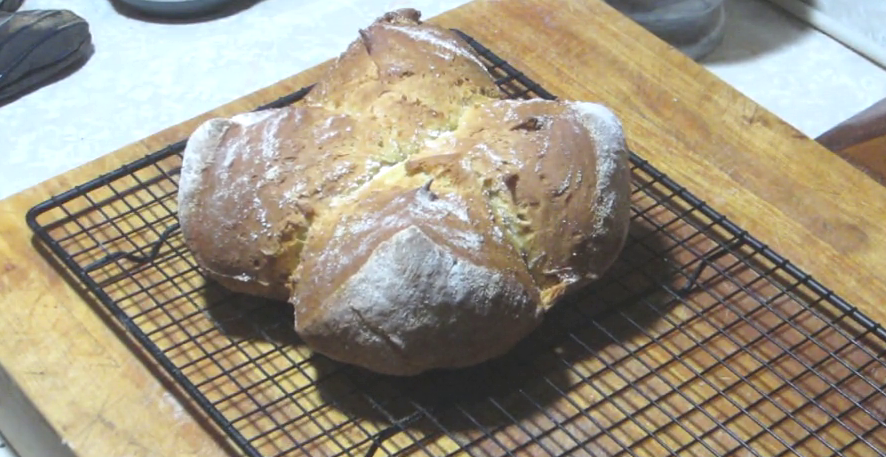It’s a holiday and all the shops are closed. You’ve just made a stew and need some hefty bread to match. You can’t wait around for yeast to do their thing in a well-risen oat bread. You don’t own a giant upright mixer. You have a bowl, your hands, and an oven. What do you do? Whip out the buttermilk and bicarb for a quick loaf of soda bread.
If you’ve never tried it, soda bread should be a dense crusty loaf. It suffers most when under baked never having a chance to acquire any deep flavour. This isn’t light, airy sandwich bread found at afternoon tea, this is hearty bread that chops down trees and builds stone castles in its spare time. The leavening reaction happens when the alkali bicarb meets the acid buttermilk and while it does impart some lift, it’s not nearly the bubble fest you find with yeast breads. The advantage is of course that it’s much quicker.
In a bread emergency I’d much rather have a loaf of this than resorting to the local convenience store which is probably a longer drive than it takes to bake your own.
ps. This is barely a recipe but was by request. If you have a kitchen or garden conundrum you’d like me to tackle, send an email with the link at the bottom of the page or comment on my YouTube channel (the latter being the slower option but I get to them all… eventually).
Soda Bread Quickly
500 g all-purpose flour (or mix half whole meal)
1 teaspoon salt
2 teaspoons bicarb of soda (aka, baking soda)
400 ml buttermilk (or clabbered milk)
Preheat the oven to 200C (390F).
Sift the flour, salt, and baking soda together in a large bowl. Add the buttermilk all at once and fold together from the bottom until it can be turned out onto your bench and kneaded lightly just until smooth.
Place the formed loaf on a baking sheet and score the loaf very deeply in an ‘X’ pattern, nearly three-quarters of the way through the loaf, to help with rise and thorough baking. Dust with extra flour or cornmeal if desired. Bake immediately for roughly thirty minutes to an internal temperature of 94C (200F). The crust will brown early but the loaf isn’t done until it sounds hollow when tapped.
Serve warm and consume within the day since it doesn’t store well. Make breadcrumbs with any excess and freeze for other uses.

